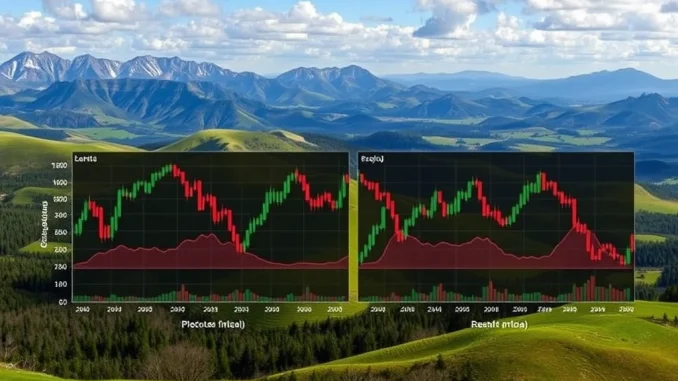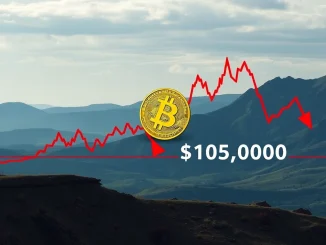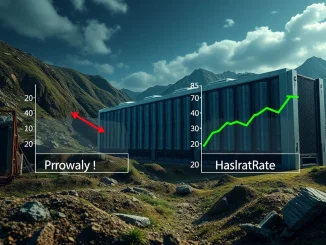
Understanding market sentiment is crucial for navigating the volatile world of cryptocurrency trading, especially when it comes to derivatives like BTC perpetual futures. One key metric traders often watch is the Bitcoin long short ratio. This simple ratio provides a snapshot of how many traders are currently betting on Bitcoin’s price going up (long) versus how many are betting on it going down (short) in the perpetual futures market.
What is the Bitcoin Long Short Ratio and Why Does it Matter?
The Bitcoin long short ratio is calculated by dividing the total number of long positions by the total number of short positions on a specific exchange or across multiple exchanges for a given asset, like Bitcoin. A ratio above 1 indicates that there are more long positions than short positions, suggesting a bullish sentiment among futures traders. Conversely, a ratio below 1 means there are more short positions, pointing towards a more bearish sentiment.
This ratio is considered valuable crypto trading data because it can sometimes act as a contrarian indicator. For example, an extremely high ratio (many longs) might suggest the market is overly optimistic and potentially due for a correction. Similarly, an extremely low ratio (many shorts) could signal excessive fear, potentially preceding a short squeeze or price bounce.
Analyzing the Latest BTC Perpetual Futures Data
Let’s dive into the recent 24-hour BTC perpetual futures data. The aggregated ratio across several major exchanges provides a broader market view, while individual exchange data can show nuances.
Here are the long-short ratios for BTC perpetual futures across cryptocurrency exchanges over the past 24 hours:
| Exchange/Total | Long % | Short % |
|---|---|---|
| Total (Aggregated) | 47.82% | 52.18% |
| Binance | 46.84% | 53.16% |
| Bybit | 47.6% | 52.4% |
| Gate.io | 49.28% | 50.72% |
Looking at this crypto trading data, the overall picture shows a slight lean towards short positions (52.18% shorts vs. 47.82% longs). This indicates that, over the past 24 hours, a marginally larger percentage of traders in the perpetual futures market were positioned for a price decrease rather than an increase.
Breaking it down by exchange:
- Binance: Shows the strongest bearish tilt among the listed exchanges, with shorts significantly outweighing longs (53.16% vs 46.84%).
- Bybit: Also shows a bearish lean, though slightly less pronounced than Binance (52.4% vs 47.6%).
- Gate.io: Presents a much closer balance, with shorts still slightly leading, but by a much smaller margin (50.72% vs 49.28%). This suggests a more neutral or mixed sentiment on Gate.io compared to the others.
How Does This Crypto Trading Data Inform Your Strategy?
This specific crypto trading data point isn’t a standalone signal, but it offers valuable context. For traders active in perpetual futures, observing a persistent lean in one direction might influence their decisions. A dominant short position, as seen in the overall and Binance data, could suggest potential downward pressure, but it also sets the stage for a short squeeze if the price unexpectedly moves up.
Conversely, if you were considering a long position, seeing a majority of traders shorting might give you pause, prompting further analysis of other indicators. It’s about understanding the prevailing sentiment among other market participants who are also trading Bitcoin futures.
Navigating Perpetual Futures with Ratio Insights
Trading perpetual futures involves leverage, which amplifies both gains and losses. Therefore, having access to timely and relevant crypto trading data like the long-short ratio is essential for risk management and strategy refinement. While this ratio reflects open positions and not necessarily trading volume or conviction, a significant imbalance can sometimes precede volatile moves as positions are forced to close.
Beyond the Numbers: What These Bitcoin Futures Ratios Could Mean
The slight bearish tilt in these Bitcoin futures ratios doesn’t guarantee a price drop. It simply reflects the current positioning of traders. Market dynamics are influenced by a multitude of factors, including macroeconomic news, regulatory developments, technical chart patterns, and overall market liquidity. However, keeping an eye on the Bitcoin long short ratio provides one piece of the puzzle, helping traders gauge the collective mood in the derivatives market.
In conclusion, the latest 24-hour data reveals a cautious sentiment in the BTC perpetual futures market, with short positions slightly outnumbering longs across major exchanges. While not a definitive predictor, this Bitcoin long short ratio is a valuable piece of crypto trading data that traders using perpetual futures and Bitcoin futures should monitor alongside other indicators to inform their strategies and manage risk effectively.



